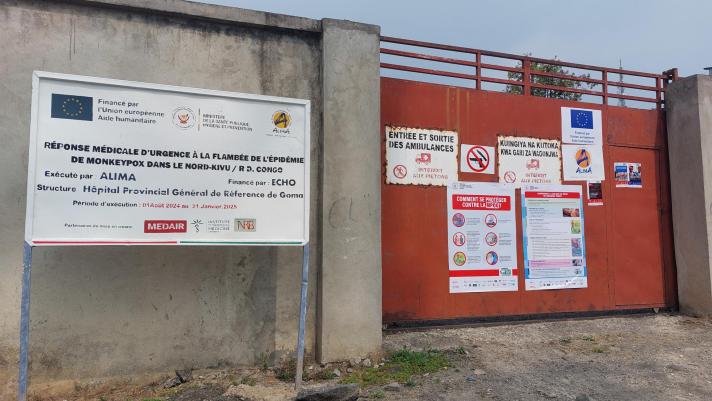The viral disease mpox is spreading in Africa and has been declared a public health emergency of international concern (PHEIC) by the World Health Organization.
First identified in 1958, the first case of mpox in humans was recorded in the Democratic Republic of Congo in 1970. Mpox is transmitted through close contact with infected humans or animals. It causes flu-like symptoms, skin lesions and can be fatal, with mortality rates varying across different viral groups. For decades, the disease was largely confined to the forests of the Congo Basin and West Africa but has now spread to other areas of the continent.
We spoke to Matteo Nocci, who oversees medical programmes at the European Commission's Directorate-General for European Civil Protection and Humanitarian Aid Operations, to find out more about the current outbreak.
What is the situation like right now?
“This ongoing mpox outbreak is already bigger than any previous ones. So far in 2024, 19 countries have reported more than 11,000 confirmed cases, including 53 deaths. But if we consider both suspected and confirmed cases, the death toll will rise, approaching 1,000, according to the World Health Organization. This ongoing mpox outbreak is already bigger than any previous ones. There are two broader variations or ‘clades’ of the mpox virus: clade 1 and clade 2. Clade 1, the oldest form of the virus, typically results in more severe illness and death and it occurs regularly or is endemic in Central Africa. It is spread through contact with infected animals who carry the disease and through close human contact, with children also at risk. Clade 2 caused a global mpox outbreak in 2022 and tends to be less severe. Last year, a new clade emerged – clade 1b – which has rapidly spread in adults and in children through close contact.”
How serious is the current outbreak?
“Mpox is not the next global pandemic like COVID-19, but the spread is alarming. The mpox epidemic must be addressed quickly and effectively to avoid a larger global spread. While some people get very sick and even die from the disease, most people recover fully from mpox. The disease can however be very stigmatizing due to visible symptoms. However, we still don’t have the full picture. In remote areas with limited testing capacity, poor disease surveillance and laboratory detection sometimes might make it difficult to distinguish mpox from other diseases.”
What is the EU doing to help stem the spread?
“The EU has already delivered 215,000 doses of vaccines and additional doses from EU member states will be donated in the next weeks by the EU and its Member States (“Team Europe”). The EU Commission’s humanitarian aid program has also released €1.5 million in humanitarian aid to support care, prevention, epidemiological surveillance, risk communication by activating different instruments. Moreover, two epidemiologists supporting the Africa Centres for Disease Control and Prevention and its partners in Congo have been deployed, in cooperation with the European Centre for Disease Prevention and Control.
Through our humanitarian partners, we are sharing trusted and accurate health information with communities, and actively looking for suspected cases that we’ll refer to hospitals. We also conduct health and hygiene promotion measures.”
What should you do if you display symptoms?
“Infected people often get a rash that resembles pimples or blisters, accompanied by fever and other flu-like symptoms. If this happens, we urge people to immediately see a medical professional, as treatment can drastically reduce the severity of the infection.”


